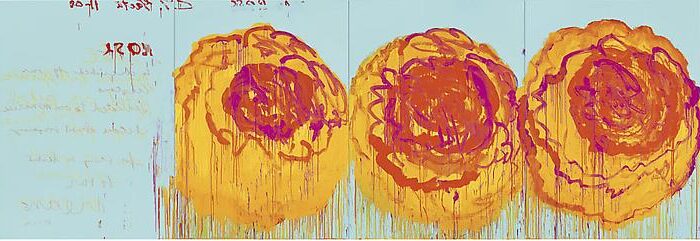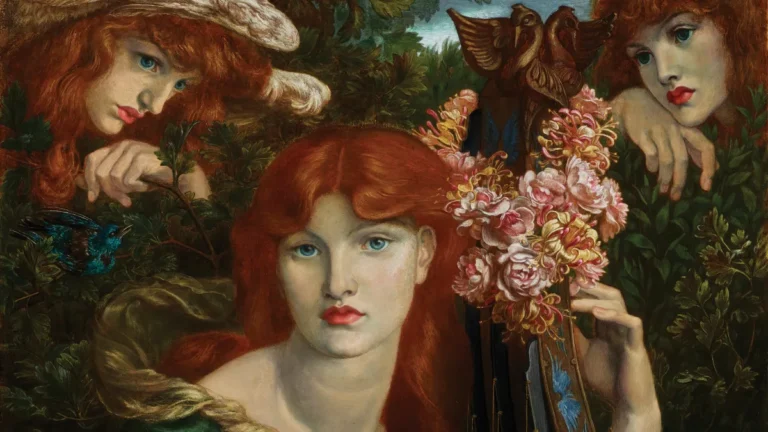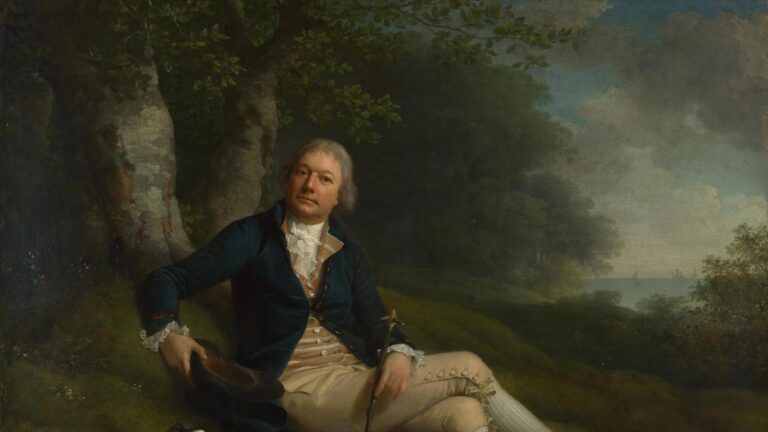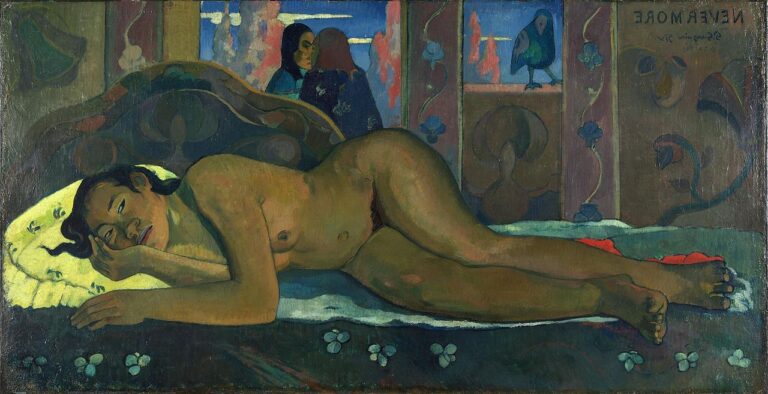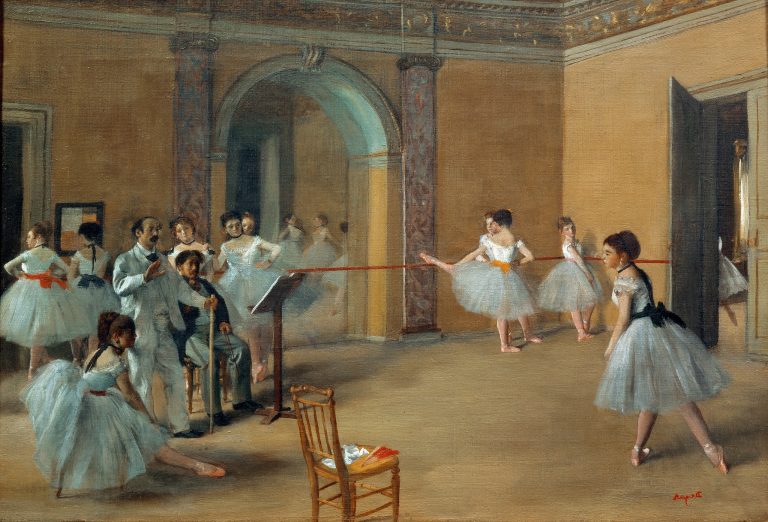Cy Twombly: Painter Who Revolutionized Abstract Expressionism in the 20th Century
Born: April 25, 1928, Lexington, Virginia, U.S.
Death: July 5, 2011, Rome, Italy
Mouvement artistique : Expressionnisme abstrait
Nationalité : Américain
Teacher: Pierre Daura
Institution: School of the Museum of Fine Arts, Art Students League, Black Mountain College
Cy Twombly: Painter Who Revolutionized Abstract Expressionism in the 20th Century
Life and Educational Background
Cy Twombly was a renowned artist who gained international acclaim. His formal education and key relationships shaped his distinctive artistic style that blended abstraction with cultural and historical references.
Premières années et influences
Edwin Parker “Cy” Twombly Jr. was born on April 25, 1928, in Lexington, Virginia. His father, a baseball player, inspired his nickname “Cy” after baseball star Cy Young.
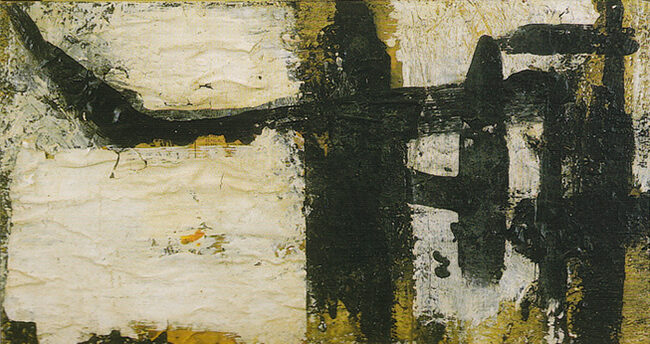
Landscape, 1951, by Cy Twombly
Twombly’s interest in art emerged early. He began his artistic education through modest mail-order art kits from the Sears Roebuck catalog. After high school, he pursued formal training at the School of the Museum of Fine Arts in Boston from 1947 to 1949.
He continued his studies at the Art Students League in New York, where he encountered contemporary movements in Modern Art. This foundation exposed him to diverse artistic approaches that would later influence his unique style.
Black Mountain College and Key Relationships
In the early 1950s, Twombly attended Black Mountain College in North Carolina, a pivotal period in his development. The experimental teaching methods and creative environment profoundly shaped his artistic vision.
At Black Mountain, Twombly formed important relationships with fellow artists Robert Rauschenberg and Jasper Johns. These connections influenced his approach to art and helped establish his place in the contemporary art world.
After completing his education, Twombly traveled to Italy and Paris on a grant. Italy particularly captivated him, and he eventually settled in Rome in the late 1950s. The Mediterranean culture, classical mythology, and ancient history became recurring themes in his work.
His time abroad separated him geographically from the American art scene while enriching his visual language with European cultural references.
Style artistique et évolution
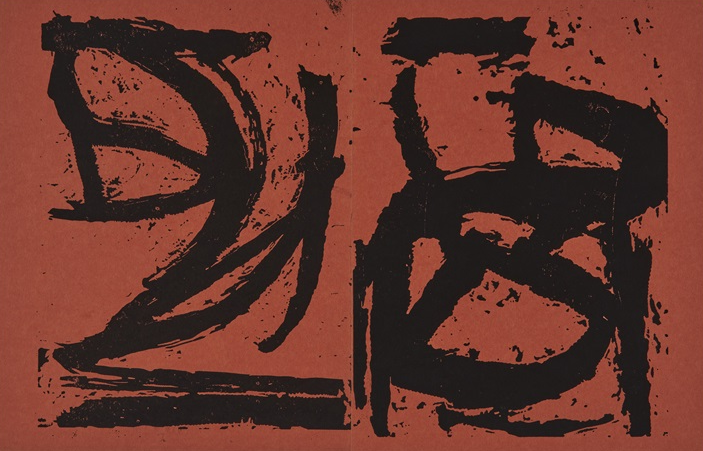
The Song of the Border Guard, 1952, by Cy Twombly
Cy Twombly developed a distinctive artistic voice that blended expressionnisme abstrait with literary references and classical mythology. His unique approach to mark-making combined seemingly childlike scribbles with sophisticated cultural allusions.
Abstract Expressionism and Graffiti
Twombly emerged from the abstract expressionist movement but charted his own path away from contemporaries like Jackson Pollock. While studying at Black Mountain College in the early 1950s, he developed his signature style of graffiti-like scrawls and gestural marks.
Unlike Pollock’s energetic drips, Twombly’s work appeared more deliberate and restrained. He often created his marks with pencil, wax crayon, and thin white paint on dark backgrounds or vice versa.
His scribbles looked spontaneous yet contained hidden depths of meaning. Twombly’s approach transformed graffiti into high art, challenging viewers to reconsider the relationship between writing and drawing.
Themes of Mythology and Written Word
Twombly’s deep knowledge of literature and classical antiquity infused his abstract works with rich cultural references. He regularly incorporated fragments of poetry, mythological names, and historical events into his canvases.
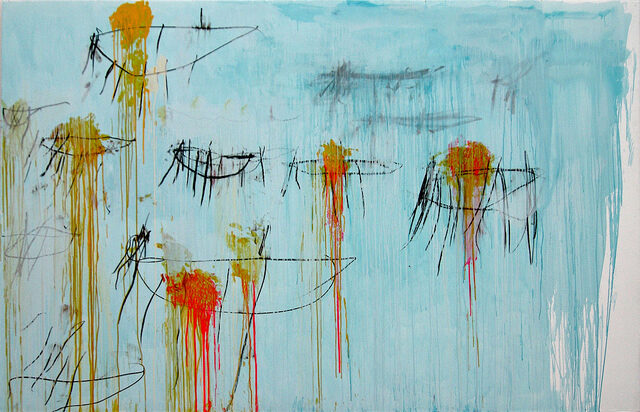
Lepanto, Part III, 2001, by Cy Twombly
His paintings often featured scrawled words from ancient Greek and Roman myths. These textual elements weren’t merely decorative but served as emotional anchors in his compositions.
Themes of love, desire, and eroticism appeared throughout his work, particularly in his references to stories like Leda and the Swan. Despite his literary influences, Twombly sometimes deliberately misspelled words or used cryptic shorthand.
His fusion of the written word with abstract imagery created a unique visual language that bridged ancient and modern artistic traditions.
Notable Works and Series
Twombly’s “Fifty Days at Iliam” (1978) stands as one of his masterpieces. This ten-part series interprets Homer’s Iliad, exploring the relationship between Achilles and Patroclus through abstract forms and text.
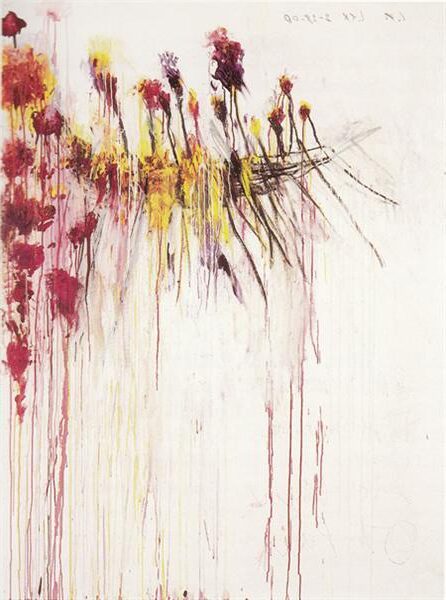
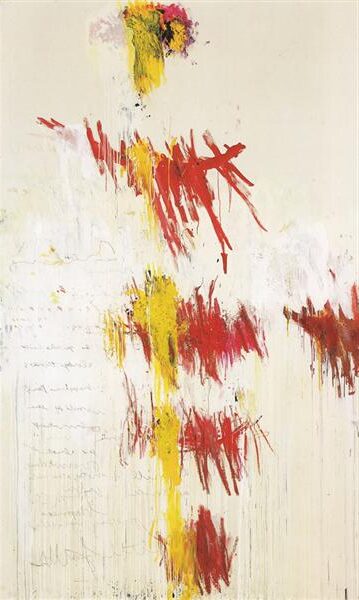
“Coronation of Sesostris” (2000) showcases his mature style with its boat imagery and solar symbols. The series combines vibrant colors with his characteristic scribbles and demonstrates his enduring fascination with ancient civilizations.
His “School of Athens” paintings pay homage to Renaissance master Raphael while transforming the concept through Twombly’s distinctive mark-making. These works blend art historical references with personal expression.
“Thermopylae” (1992) reflects his interest in historical battles and Greek mythology, using minimal gestures to convey complex narratives. His late works often featured white paint on dark backgrounds, creating ethereal, contemplative spaces.
Legacy and Contributions
Cy Twombly’s impact on art history extends far beyond his lifetime. His distinctive style combining gestural expression with cultural references has influenced generations of artists and continues to be celebrated in major institutions worldwide.
Expositions et collections clés
Twombly’s work has been showcased in prestigious retrospectives that solidified his place in art history. In 1994, the Museum of Modern Art in New York organized a comprehensive exhibition of his paintings and drawings, introducing his complex visual language to wider audiences. The Menil Collection in Houston houses a dedicated gallery for Twombly’s work, displaying significant pieces spanning his career.
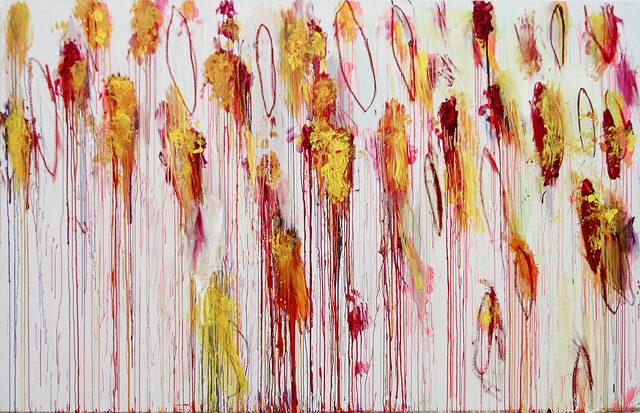
Lepanto, Part VIII, 2001, by Cy Twombly
The Centre Pompidou in Paris held a major retrospective in 2016, five years after his death, highlighting his continuing relevance. Gagosian Gallery, which represented Twombly for years, has organized numerous exhibitions celebrating different aspects of his practice.
His paintings and sculptures are now housed in prominent collections including the Tate Modern, the Louvre, and the Art Institute of Chicago.
Influence sur l'art moderne et contemporain
Twombly’s unique approach to mark-making blurred the boundaries between drawing and painting, inspiring artists working across diverse media. His incorporation of text, scribbles, and gestural marks influenced the development of Neo-Expressionism in the 1980s.
Contemporary artists like Julie Mehretu and Mark Bradford have acknowledged Twombly’s impact on their practices, particularly his layering techniques and conceptual approach to history and language.
His willingness to engage with classical themes while maintaining a resolutely modern aesthetic created a bridge between American and European art traditions. This cultural synthesis offered an alternative to the dominant American abstract expressionism of his time.
The Cy Twombly Foundation
Established before his death in 2011, the Cy Twombly Foundation preserves the artist’s legacy and promotes scholarly understanding of his work. The Foundation maintains archives of Twombly’s career, including his lesser-known photographic work.
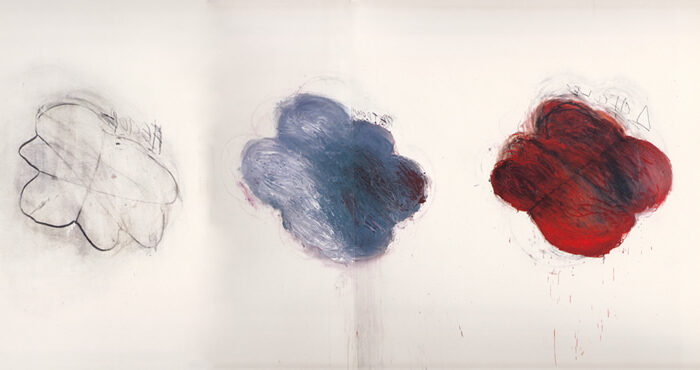
Fifty Days at Iliam: Shades of Achilles, Patroclus, and Hector, 1978
It supports exhibitions, publications, and educational initiatives related to Twombly’s art. In 2014, the Foundation donated works valued at over $50 million to the Museum of Modern Art.
The Foundation also protects the integrity of Twombly’s artistic vision by carefully managing which works are exhibited and how they are presented. It continues to collaborate with major museums to ensure new generations can experience Twombly’s revolutionary approach to art-making.
Questions fréquemment posées
Cy Twombly’s life and career provoke many questions about his artistic approach, legacy, and impact on the art market. His distinctive style combining calligraphic elements with abstract expressionism continues to fascinate collectors and art historians alike.
What was the cause of death for Cy Twombly?
Cy Twombly died on July 5, 2011, in Rome at the age of 83. The cause of his death was cancer. He had been suffering from the illness for some time.
Twombly had made Italy his home since the late 1950s, spending much of his later life in Rome and Gaeta. His death was mourned throughout the international art community.
What is the most expensive painting sold by Cy Twombly?
The most expensive Cy Twombly artwork ever sold is “Untitled (New York City)” from 1968, which fetched $70.5 million at Sotheby’s in 2015. This large-scale blackboard painting features his characteristic looping white lines against a dark gray background.
Another notable sale was “Untitled” from his celebrated “Bacchus” series, which sold for $46.4 million at Christie’s in 2017. Twombly’s market values have consistently risen since his death.
What makes Cy Twombly an important figure in art history?
Twombly bridged abstract expressionism with conceptual and minimalist art, creating a unique visual language. His integration of text, calligraphy, and references to classical mythology set him apart from contemporaries.
He was renowned for his ability to blend high cultural references with primitive mark-making. Twombly’s work displayed exceptional intellectual depth, drawing from poetry, history, and mythology while remaining deeply personal.
His unconventional approach to scale, texture, and composition challenged traditional definitions of painting. The seemingly childlike scribbles in his work actually carried profound cultural significance.
Can you discuss the influence of Cy Twombly on other artists?
Twombly’s influence appears in contemporary artists like Jean-Michel Basquiat, who shared his interest in calligraphic marks and text. His integration of writing and painting inspired a generation of artists exploring language in visual art.
Many current abstract painters cite Twombly’s freedom and gestural approach as influential. His willingness to embrace both sophistication and primitive mark-making created permission for artists to explore similar tensions.
Contemporary artists like Julie Mehretu and Mark Bradford acknowledge Twombly’s influence in their layered, textual approaches to abstraction. His impact extends beyond painting into installation art and mixed media practices.
How has Cy Twombly’s art performed in terms of market prices?
Twombly’s market has seen remarkable growth, particularly after his death in 2011. Major works regularly sell for tens of millions of dollars at auction.
His market appeal crosses multiple collecting categories, attracting both contemporary and post-war art collectors. Museum retrospectives have further bolstered his market standing.
The limited supply of Twombly works available for sale has driven prices higher. His distinctive style makes his paintings immediately recognizable, increasing their desirability among collectors.
What is the breadth of Cy Twombly’s artistic oeuvre in terms of the number of paintings created?
Twombly created approximately 600-700 paintings throughout his long career. His output was relatively modest compared to some of his contemporaries.
He also produced around 500 sculptures and several thousand drawings and prints. Twombly often worked in series, developing themes across multiple canvases over time.
His careful, deliberate approach meant he produced fewer works than many artists with careers of similar length. Each piece typically underwent extensive consideration, reflecting his thoughtful approach to art-making.

